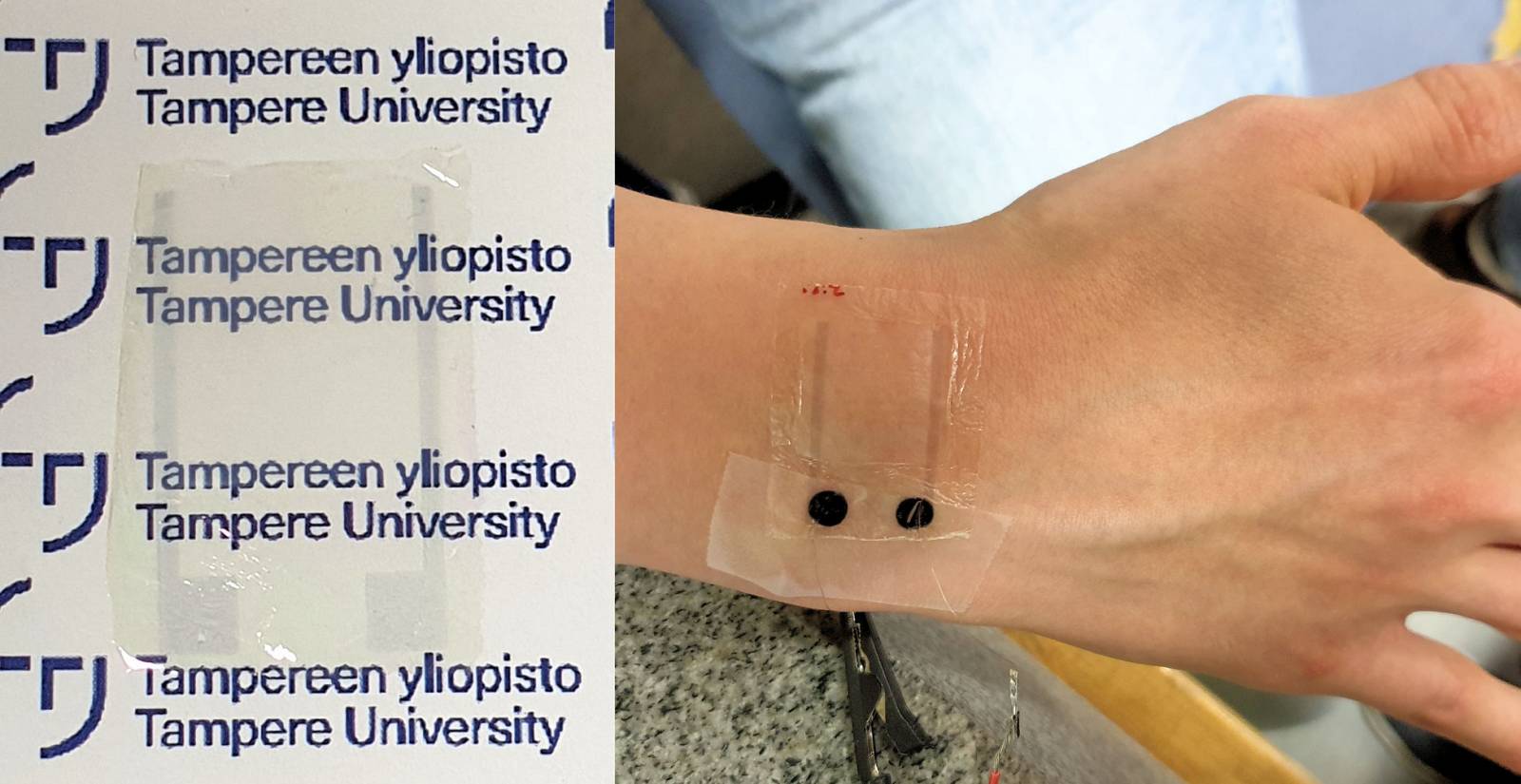Ultrathin sensing devices utilizing piezoelectric materials have emerged as potential candidates to develop highly skin-conformable and energy-efficient continuous biosignal monitoring systems. However, biocompatible, cost-efficient, and simple fabrication processes still need to be investigated to enable wider adoption of such devices. This study proposes a simple two-step printing process for the fabrication of a piezoelectric biosignal sensor that utilizes readily available and biocompatible polymer-based materials for the substrate (i.e., Parylene-C), electroactive layer (i.e., poly(vinylidene fluoride-trifluoroethylene) (PVDF-TrFE)), and interdigitated electrodes (i.e., poly(3,4-ethylenedioxythiophene):poly(styrenesulfonate) (PEDOT:PSS)). The proposed interdigitated electrode architecture improves upon the conventional metal–insulator–metal architecture by (1) increasing the thickness-normalized output voltage and (2) enabling the detection of bending orientation. The performance of the proposed sensor structure is demonstrated with the measurement of the arterial pulse waveform signal and limb movement detection. The presented results pave the way for cost-effective and continuous unobtrusive on-skin biosignal monitoring.
Self-Powered, Ultrathin and Transparent Printed Pressure Sensor for Biosignal Monitoring

